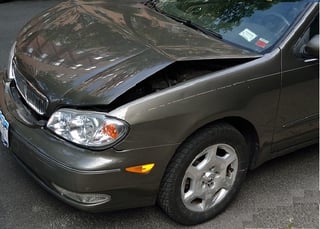- 781-659-2262
What’s the difference between OEM and After Market Parts?
Why don’t people want After Market Parts used for repairs?
Owners believe After Market parts are inferior or less safe than OEM parts. Independent safety rating organizations such as The Certified Automotive Parts Association (CAPA) and the Insurance Institute for Highway Safety (IIHS) dispute this concern. If After Market parts weren't as safe as OEM parts, manufacturers would pay the price in product liability lawsuits. They compete just fine by selling the same quality parts, same specifications, just with lower margins.
Why do insurance companies use After Market Parts for repairs?

What gives insurance companies the right to use After Market Parts?
The laws in each state regulate auto repairs. In Massachusetts, 211 CMR 133 (https://www.mass.gov/lists/211-cmr) requires the use of After Market parts if the damaged part meets the guidelines:
CMR 133.04: Determination of Damage and Cost of Repair
(1) Appraisers shall specify that damaged parts be repaired rather than replaced unless: the part is damaged beyond repair, or the cost of repair exceeds the cost of replacement with a part of like kind and quality, or the operational safety of the vehicle might otherwise be impaired. When it is determined that a part must be replaced, a rebuilt, aftermarket or used part of like kind and quality shall be used in the appraisal unless:
(a) the operational safety of the vehicle might otherwise be impaired;
(b) reasonable and diligent efforts to locate the appropriate rebuilt, aftermarket or used part have been unsuccessful;
(c) a new original equipment part of like kind and quality is available and will result in the lowest overall repair cost;
(d) for vehicles insured under policies written on or before December 31, 2003, the vehicle has been used no more than 15,000 miles unless the pre-accident condition warrants otherwise; or.
(e) for vehicles insured under policies written or renewed on or after January 1, 2004, the vehicle has been used no more than 20,000 miles unless the pre-accident condition warrants otherwise.
A part is of like kind and quality when it is of equal or better condition than the pre-accident part.
Are After Market parts really as good and safe as OEM parts?
The manufacture of After Market parts is regulated and repair shops need to be licensed. If After Market parts were indeed inferior they would be causing accidents, ultimately increasing costs for insurers. Using inferior parts isn’t in anyone’s best interest, but using After Market parts is in everyone’s best interest as it increases competition, reduces repair costs, and ultimately lowers insurance premiums.
Is it worth challenging the insurance carrier requiring I use After Market Parts?
If State law allows using After Market parts, your insurance company will authorize these for repair. If a consumer wants to pay for OEM parts on their own, that is, pay the higher margin the manufacturers get for these, most body shops will agree to use them. Even so, this can delay repairing your vehicle as the claim can become more complicated. The longer it takes to negotiate the claim, the longer you’re without a vehicle and/or you’re paying for a rental.
I’m still not convinced. Can I buy OEM coverage?
Yes! We represent several companies that offer OEM part coverage for personal vehicles (not yet for business insurance), based on the model year and odometer reading/mileage on your vehicle. As a rule of thumb, the cost is generally 30%-40% additional to the cost of your collision and comprehensive coverage.
We are local insurance experts serving the South Shore for over 70 years.
Click below to get a free quote for your personal or business insurance.